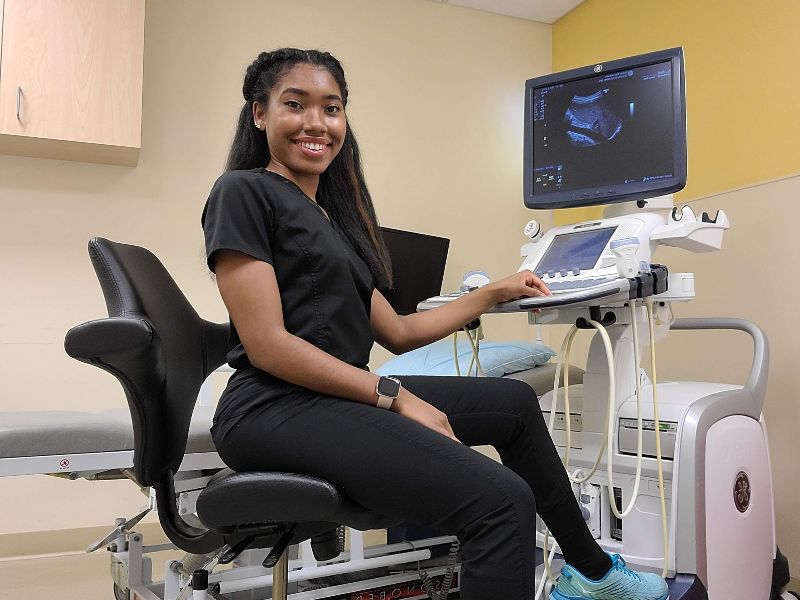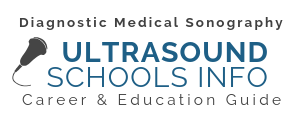
DruAusten Fields, RDMS (AB, OB/GYN), RVT
The field of sonography has been gaining interest and demand in recent years. Diagnostic Medical Sonography programs can be extremely competitive as only a small group of students is excepted each year. Thus, the question arises, “How can I make myself stand out when applying?”.
Program administrators like to see that a student is truly interested in the field of sonography, and there are several ways to make your application shine.
Job shadowing, volunteering, and focusing on grades while meeting program prerequisites are all important steps in putting your best foot forward and showing that sonography is what you are passionate about!
Make Your Sonography Program Application Stand Out From the Crowd
Step One – Job Shadow
Job shadowing is an unpaid exposure to the work environment. It will allow you to follow a sonographer around for the day and see first-hand his or her duties and workflow. A simple Google search can reveal job shadowing opportunities in your area. Various hospitals, OB/Gyn clinics, diagnostic centers, medical groups, and other facilities offer these opportunities.
Many facility websites will have an online application for you to fill out as well as a contact number for a specific department to assist you if you have further questions. If not, you can always call a facility to ask if you can job shadow there. Each place is different so the correct person to contact may vary from facility to facility.
Step Two – Prepare in Advance to Meet Ultrasound Program Prerequisites
In addition to job shadowing, I recommend researching the prerequisites of the program to which you would like to apply. Having them completed by the time of your application will make yourself more appealing for acceptance into the program.
Throughout all of your college courses, aiming to earn the best grades possible is of utmost importance! DMS program instructors like to see a high GPA, which can indicate that you will likely succeed in the program. Since the field of sonography deals with a lot more than book smarts, DMS program directors may appreciate letters of recommendation from superiors at work, colleagues, or community leaders. These votes of confidence will provide a little insight into
your character.
Step Three – Volunteer and Rock the Interview
Another feature that always looks good on an application is evidence of volunteering. This will exhibit that you are a well rounded person, and it will give you experience in interacting with members of the community. Essentially, this is the bulk of what a career in sonography entails, people skills.
In addition, many programs require an in-person, virtual, or telephone interview in the application process. Your presence during this interview is important. It’s a prime opportunity to show an eagerness to learn, and confidence in one’s ability to adapt. Interviewers love to see a “can-do” attitude! Make sure you use good eye contact, dress the part, and envision your success.
Let’s Compare and Contract Different Sonography Programs
There are hundreds of DMS programs around the world, and each one has different characteristics and requirements for its applicants. Programs accredited by the Commission on Accreditation of Allied Health Education Programs (CAAHEP) meet certain universal requirements that enhance the quality of these programs. Let’s compare and contrast a few CAAHEP accredited programs in different parts of the United States.
First, we can examine the admissions requirements for two associate degree programs: Gwinnet Technical College in Alabama, and the College of Southern Nevada in Nevada.
Gwinnet Technical College is located in Atlanta, Georgia. Students seeking to enter the program are required to take a TEAS test and submit their score in the application process. A TEAS (Test of Essential Academic Skills) is a standardized exam that can be used to examine how well potential students will adapt to a nursing or allied health program.
According to the Georgia Technical College catalog, the applicant’s GPA and TEAS scores are examined and input to a spreadsheet. The highest scores are the main determinants of which students will be accepted into the program. The school also recommends completing volunteer hours in an ultrasound lab for the possibility of bonus points on the application.
The College of Southern Nevada’s associate degree DMS program is also accredited by CAAHEP. This college’s application requirements appear to be less “grades” focused. The website emphasizes that all prerequisites must be completed in order for a student to be eligible to start the program. Also, a Health Programs orientation is required for eligibility to apply. Lastly, potential students have to meet with a Health Program advisor to discuss more details about getting into the program.
There are also bachelor’s degree Diagnostic Medical Sonography programs available. Since these are a higher level of education, more effort is generally required to get into these programs, and we will compare and contrast two of them here.
Kaiser Permanente baccalaureate degree DMS program has some unique requirements. Students are required to submit documentation of job shadowing or submit written information regarding job shadowing in order to apply to the program. Students currently have 2 options due to the recent pandemic. The first option is to complete 8 hours of job shadowing in the modality in which the student is applying. The second option is to write a 750 word or less essay regarding job shadowing. The student must describe typical job duties of someone in the field, describe a common exam or procedure performed, and describe something new that the student learned about the field that was surprising.
Students seeking to apply to this program must also have an Associate of Arts or Associate of Science degree (or higher level degree) in any discipline.
They must have also earned a 3.0 Cumulative Grade Point Average (CGPA) from all higher education institutions previously attended.
A grade C or higher is required in each of the prerequisite courses involving the subjects of Human Anatomy & Physiology including a lab, Medical Terminology, General Physics, Oral Communication/Speech, Written Communication, College Algebra or a higher-level mathematics course.
Long Island University has a baccalaureate degree DMS program for which students must apply for only when they are ready to enter years 3 and 4 of the
program. A minimum of 60 undergraduate Liberal Arts and Science credits, including Oral Communications, Anatomy and Physiology I and II with lab, Physics with lab, Statistics, and Algebra is required.
In contrast to Kaiser Permanente’s program, Long Island University allows a lower Cumulative Grade Point Average. In order to apply, students must also have a minimum overall GPA of 2.75 and a science & math GPA of 2.75. A minimum grade of ‘C’ in only the science and math courses is necessary to apply. Lastly, applicants must meet the minimum writing requirements for the university.
In conclusion, all DMS programs have specific standards for what they are seeking in potential students. That is why it is vital to put your best foot forward to make yourself stand out among the other applicants. It would be a huge accomplishment to be accepted. However, if you are not accepted on your first try, do not be discouraged. There is always a way to restrategize and reroute with a better plan for the future.
